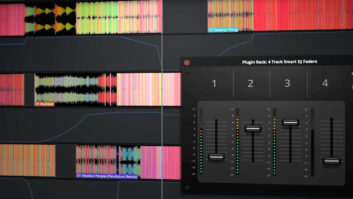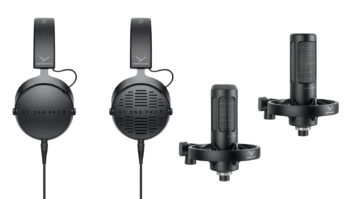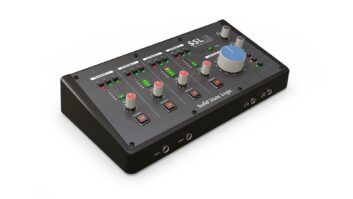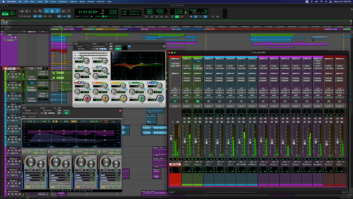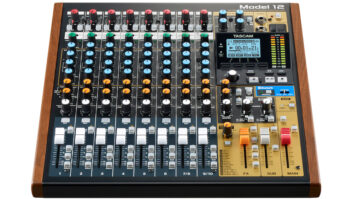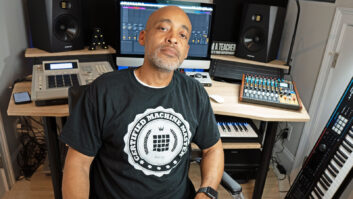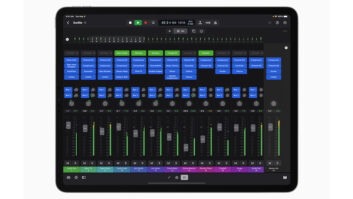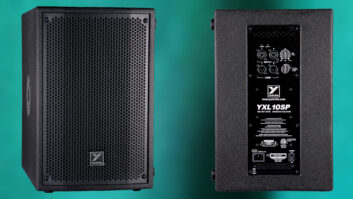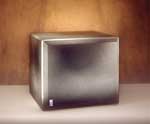
Bag End has been making speakers and subwoofers for nearly three decades, creating its first sub in 1986 that went down to 30 Hz and then building an even lower 8Hz version in 1990.
The new INFRASUB-12 Pro ($1,980), the smallest member of Bag End’s powered sub family (the series includes 12- and 18-inch models, with a 21-inch version on the way), is a good fit for midline mastering/project studios and installations in which space is a consideration. The INFRASUB-12 Pro carries enough power (400 watts continuous, sine wave output) to handle all kinds of low-end material, down to a user-selectable 20 or 8 Hz. Bag End’s INFRA range employs electronic compensation to the uniform response that a sealed-box loudspeaker system exhibits below its resonance frequency, which reportedly extends frequency response well below audible range while reducing the system resonance’s influence.
The INFRASUB-12 Pro handles bass management by accepting bass frequency content from the five surround speakers in a 5.1 system via balanced XLR inputs (A through E) and routing that mono-summed material to the sub. The passive crossovers then highpass content back out via five balanced male XLR connectors (-3 dB @ 130 Hz; -6 dB @ 95 Hz).
There’s also a separate sub input (F) with adjustable gain for systems that already have LFE material generated, plus a -10dB offset switch for even more flexibility with cinema processors. A polarity reversal switch is handy for proper alignment with the rest of the mixed signals, and there’s a separate level control for the infrasonic bass level. Thermal overload breakers protect the power amp in case of accidents or excessive levels. A detachable power cord and removable black front grille complete the package.
Because most subs aren’t always visible, there’s a handy power-on indicator and a Dynamic Filter Active LED in a box that attaches to an XLR connector/cable. It can sit anywhere — on a meter bridge or between monitors — to indicate that the unit is indeed on (trust me, you’ll know) and when the unit may be running into Protection mode. In this mode, a dynamic highpass filter “slides” from the bottom of the frequency range upward as needed to protect against system overload. The light lets you know whether what you’re hearing is what’s on disc.
SUB SETUP
Setting up and testing the INFRASUB-12 Pro was straightforward. The unit meshed smoothly with my existing KRK near-field surround and stereo speaker setup, with a useful roll-off point at 95 Hz (3 dB down @ 80 Hz). Bag End does not make specific speaker recommendations, but it does have its own M6s available for a complete 5.1/stereo system. After incremental sine wave testing and level adjustment of my space, serious subjective listening began with levels similar to the sub that was previously in place. I toggled between the two to set overall levels, eventually turning off my original subwoofer.
The INFRASUB-12 Pro’s sound was a dramatic change from what I was used to hearing: tighter and smoother response (fewer hot spots, too), with a thrilling trip down to the lowest limits of human feeling, er, hearing.
The INFRASUB-12 Pro went through some serious workouts while I mixed several live projects for radio broadcast. The low-end material ranged from concert bass drum in a performance of Carl Orff’s Carmina Burana with the Chamber Orchestra of Philadelphia, to a punchy, low-down, thumpy double bass from a live jazz date with the Randy Weston Trio, both recorded in Philadelphia’s Kimmel Center.
THE RESULTS
The INFRASUB-12 Pro delivered effortless clarity. Mixing from a multitrack gave me a chance to re-evaluate and appreciate mic placement and pickup pattern choice. Working with high-end digital resolution and no-excuse microphones such as DPA 4006s and Neumann KM84s, the sub sheds new light on microphone choices and the smallest amounts of track EQ adjustment. It’s wonderful to roll off nonessential sub bass from tracks that shouldn’t add to the muddle in the first place (soprano solo mics, children’s choir, bell chimes, etc.) while keeping the full-bodied punch of upright jazz basses and classical percussion.
The low end on these and other projects came across tight and controlled, with true portability to other listening systems. My mixes with the INFRASUB-12 Pro aired shortly after the actual recording on my local NPR station and translated exactly how I’d hoped wherever I listened.
There is really nothing quite like experiencing smooth bass response down to and below 20 cycles without slop, delay or smear. Revisiting mixes of my own revealed low-end content between 20 and 40 cycles that I never heard before. It’s scary to think about what many of us are routinely missing audio-wise, and that could become embarrassingly obvious as more and more systems like this become the norm.
After hearing a few commercial CDs on the INFRASUB-12 Pro, it’s clear that many engineers still mix with too much kick and low end. The INFRASUB-12 Pro exposed many vocal plosives that were probably inaudible during mastering without a good sub. There also seems to be an alarming difference between genres, making one wish for an industry-standard level for low end. (Who wants to change subwoofer levels each time you change a CD?) For classical, jazz, pop, rock and beyond, the differences in levels at the very low end are amazingly disparate.
The Bag End INFRASUB Pro Series is a necessary step in the right direction — perhaps setting a new standard for accurate mix references. Anyone who’s serious about mastering and creating portable mixes should have one of these as a reference tool.
Bag End, 847/382-4550, fax 847/382-4551, www.bagend.com.
Joe Hannigan runs Weston Sound & Video in Philadelphia.
